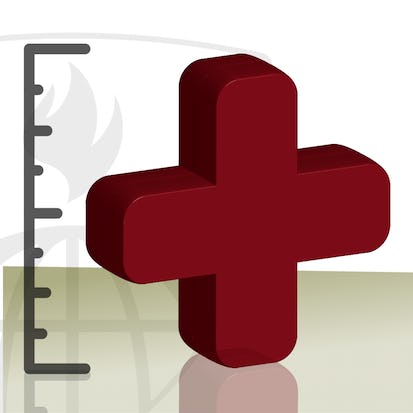- Level Foundation
- Duration 15 hours
- Course by Johns Hopkins University
-
Offered by

About
Biostatistics is the application of statistical reasoning to the life sciences, and it is the key to unlocking the data gathered by researchers and the evidence presented in the scientific literature. In this course, we'll focus on the use of statistical measurement methods within the world of public health research. Along the way, you'll be introduced to a variety of methods and measures, and you'll practice interpreting data and performing calculations on real data from published studies. Topics include summary measures, visual displays, continuous data, sample size, the normal distribution, binary data, the element of time, and the Kaplan-Meir curve.Modules
The Role of Statistics in Public Health Research
6
Videos
- Welcome
- Introduction and Overview
- Samples Versus Population
- Considerations with Regard to Study Design
- Data Types and Summarization
- Additional Examples
Formative Assessment
1
Assignment
- Practice Quiz: The Role of Statistics in Public Health Research
Continuous Data Measures
6
Videos
- Introduction
- Useful Summary Statistics
- Visual Displays
- The Role of Sample Size on Sample Based Estimates
- Comparing Distributions of Continuous Data
- Additional Examples
Formative Assessment
1
Assignment
- Practice: Continuous Data Measures
Summative Assessment
1
Assignment
- Continuous Data Measures
1
Readings
- Summative Quiz Solutions
The Normal Distribution
5
Videos
- Introduction
- The Standard Normal Distribution Defined
- Applying the Principles of the Normal Distribution to Sample Data to Estimate Characteristics of Population Data
- What Happens When We Apply the Properties of the Normal Distribution to Data Not Approximately Normal: A Warning
- Additional Examples
Formative Assessment
1
Assignment
- Practice: The Normal Distribution
Summative Assessment
1
Assignment
- The Normal Distribution
Binary Data
6
Videos
- Introduction
- Binary Data: Definition and Summarization (Binomial Distribution, P-Hat, SD)
- Comparing Distributions of Binary Data: Risk Difference and Relative Risk
- Comparing Distributions of Binary Data: Odds Ratios
- A Brief Note About Ratios (Will Also Be Revisited Later in the Course)
- Additional Examples
Formative Assessment
1
Assignment
- Practice: Binary Data
Summative Assessment
1
Assignment
- Binary Data
1
Readings
- Summative Quiz Solutions
Dealing with the Element of Time
6
Videos
- Introduction
- Time to Event Data: Definition (Censoring) and Numerical Summary Measures (Incidence Rates)
- Numerically Comparing Groups on Time to Event Outcomes
- Summarizing Time-to-Event Data, Graphically
- Graphically Comparing Groups on Time to Event Outcomes
- Additional Examples
Formative Assessment
1
Assignment
- Practice: Dealing with the Element of Time
Summative Assessment
1
Assignment
- Dealing with Elements of Time
1
Readings
- Summative Quiz Solutions
Biostatistical Consulting Project (1 attempt per day allowed)
1
Assignment
- Course Project Quiz
2
Readings
- Biostatistical Consulting Project
- Course Project Quiz Solutions
Auto Summary
"Summary Statistics in Public Health" is a foundational course in Health & Fitness offered by Coursera. It focuses on biostatistics and its application in public health research. Learners will explore statistical measurement methods, interpret data, and perform calculations using real data from published studies. Key topics include summary measures, visual displays, continuous data, and the Kaplan-Meir curve. The course lasts 900 minutes and offers Starter, Professional, and Paid subscription options, making it ideal for those interested in public health and statistical analysis.

John McGready, PhD, MS


